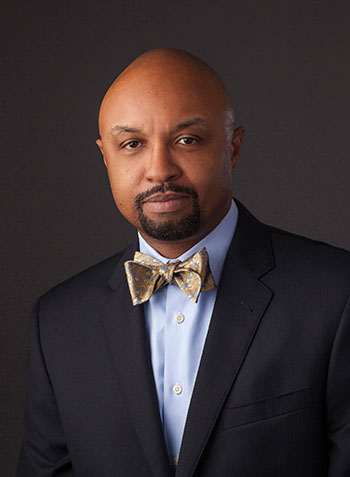August 2016 • Volume 104 • Number 8 • Page 10
Thank you for viewing this Illinois Bar Journal article. Please join the ISBA to access all of our IBJ articles and archives.
President's Page
Understanding Implicit Bias
The first step in understanding and addressing implicit bias is recognizing that it exists.
 As I considered what I would address during my term as ISBA president, I wanted to choose at least one issue touching upon social justice. I wanted that issue to have deep enough roots to provoke meaningful dialogue and promote social progress.
As I considered what I would address during my term as ISBA president, I wanted to choose at least one issue touching upon social justice. I wanted that issue to have deep enough roots to provoke meaningful dialogue and promote social progress.
I decided that I would initiate a dialogue about implicit bias. I've learned that every one of us is influenced by our implicit biases. They affect us more than we are capable of recognizing through any superficial self-assessment.
Implicit bias is formed and trapped in the subconscious by years of teachings, experiences, and other environmental and social influences. It exists beneath the surface. Our implicit biases function as an unfortunate default position for the brain in times of controversy, conflict, and disagreement.
This explains why people of different races, genders, cultures, and orientations sometimes run to opposite philosophical corners in times of conflict - even when we hold one another in high esteem and have similar world views, and regardless of the facts.
On July 5, 2016, Alton Sterling, an African American, was shot multiple times and killed by police officers in Baton Rouge, while Sterling was pinned to the ground. He reportedly had a firearm in his pocket. On July 6, 2016, Philando Castile, an African American passenger in a vehicle stopped by a police officer in St. Paul, was shot and killed after informing the officer that he was legally carrying a firearm.
Both incidents were captured on videos that went viral on social media. On July 7, 2016, Micah Johnson, an African American, killed five Dallas police officers by sniper fire. It was widely reported that he had been planning an attack on white people. Ten days later, Gavin Long killed three police officers in Baton Rouge.
It was a tragic period during which racial tensions intensified. Many Americans seemed to run to their respective default corners. Each corner leveled accusations of bias against the other, seemingly with no consideration of their own bias.
I am confident that I remained in an objective place, but so is everyone else. How can this be, with so much disagreement? I must confess that I too believed that many who didn't see the events through the same lenses I did probably suffered from some longstanding vision impairment.
The troubling thing about implicit bias is that it is insidious, hiding in the recesses of the brain. Implicit bias can be so dormant that we are offended by the very suggestion that it exists within us. Whether in times of harmony or conflict, when we are confronted about our obvious biases, we are quick to deny with the common response that "I have friends" who are members of the group at issue.
On the other hand, overt bias - bigotry and racism - operate in the conscious areas of the brain and the heart. They do so in relative comfort, constrained only by self-interest and cowardice.
Most people are sincerely confident that they do not fall into the category of bigot. At the same time, too many really good people are unaware that they are captive to their subconscious biases, even to a point that it renders them incapable of making meaningful and effective contributions to the dialogue, too often at the most critical moments.
Psychologist and author Stephen Joseph opines that outer authenticity is reflected by "how well what we say and do matches up with what is really going on inside us." He further opines that inner authenticity is reflected by "how well we actually know ourselves and are aware of our inner states."
By these definitions, the boldest bigot can have outer authenticity. At the same time, the people most dedicated to social progress can lack inner authenticity because in an instant their brains can be triggered to default to the biased beliefs that they learned as children.
Recently the U.S. Department of Justice announced that it would require implicit bias training for federal agents and prosecutors. The Hon. Timothy Evans, Chief Judge of the Cook County Circuit Court, is instituting implicit bias training for judges. These are major steps forward.
I look forward to implicit bias programming at the ISBA Midyear Meeting. I do so with the end in mind of learning more about myself, and making a more authentic contribution to the American discourse. I hope others will join me.


Member Comments (2)
Sub-conscious use of pain causing "dog-whistle" expressions is an example of the need for not only dialogue at the Midyear meeting but resulting distribution of a list of such utterances to be eliminated from all ISBA conversations and publications. Wink and a nod willful ignorance of the existence and impact of such expressions may accordingly be diminished by such a resolution.
Thank you for your wonderful and nuanced column on implicit bias. You elegantly put into words the elephant in the room.